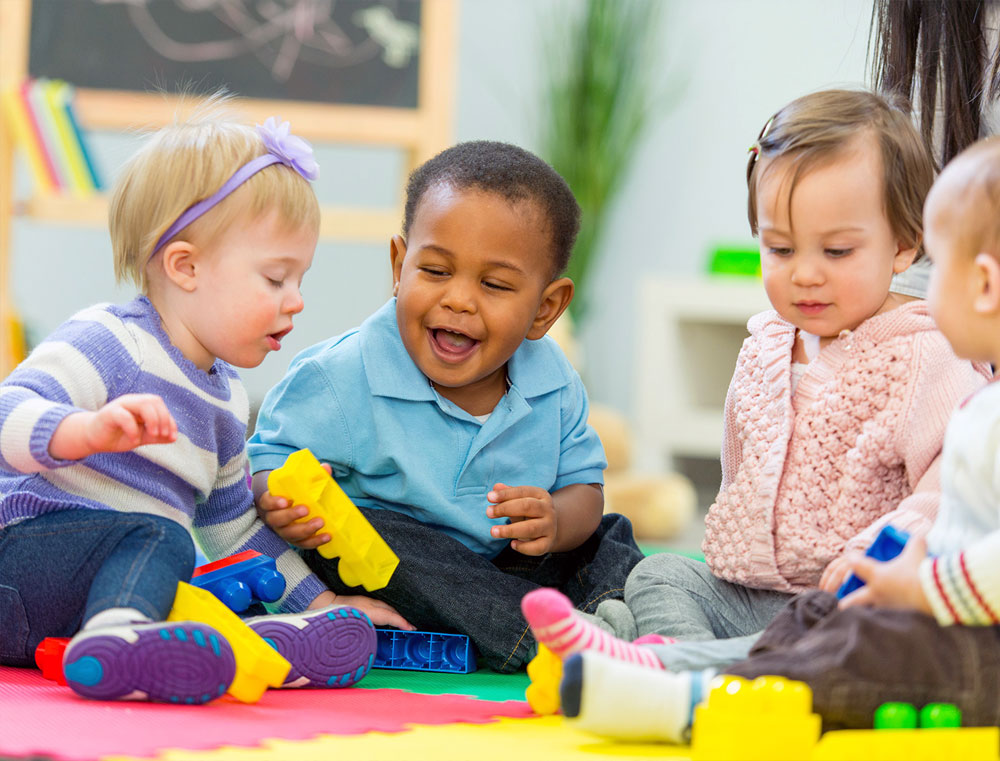Parents want their children to be healthy and happy. It’s easier to tell if your child is developing physically, but do you know if your child is developing the appropriate social and emotional skills? Supporting their emotional and social development is just as important as supporting their physical development.
What is social and emotional development?
Social and emotional development is a child’s ability to understand the feelings of others, control his or her own feelings and behaviors, get along with other children, and build relationships with adults. In order for children to develop the basic skills they need such as cooperation, following directions, demonstrating self-control and paying attention, they must have social-emotional skills.
Why is it important for children to have positive social and emotional skills?
Having positive social and emotional skills is important throughout life and can have an impact on how they function at home, school and in the community. When young children are faced with social, emotional or behavioral challenges it can impact their chances for school success and healthy relationships. A child’s positive relationship with trusting and caring adults is the key to successful emotional and social development.
Adolescence (the stage between 10 and 24 years) is a period of life characterized by heightened sensitivity to social stimuli and the increased need for peer interaction. The physical distancing measures mandated globally to contain the spread of COVID-19 are radically reducing adolescents’ opportunities to engage in face-to-face social contact outside their household. Human studies have shown the importance of peer acceptance and peer influence in adolescence. Animal research has shown that social deprivation and isolation have unique effects on brain and behavior in adolescence compared with other stages of life. However, the decrease in adolescent face-to-face contact might be less detrimental due to widespread access to digital forms of social interaction through technologies such as social media.
Indeed, adolescence can be considered a sensitive period for social development, which might be partly dependent on the development of the social brain: the network of brain areas involved in social perception and cognition that allows us to understand others. As with most regions within the human cortex, the structure of the social brain develops substantially throughout adolescence. For healthy development, parental and caregiver input is a crucial component, especially during early development, whereas later in development the influence of peers becomes an additional important element of the social environment. Adolescence is also a period of heightened vulnerability to mental health problems, with 75% of adults who have ever had a mental health condition reporting that they first experienced symptoms before the age of 24. There is evidence that problems with peer relationships, peer rejection, bullying, and loneliness are risk factors for the development of affective conditions such as depression in adolescence. Conversely, high quality peer relationships appear to protect against mental health problems and strengthen adolescent resilience. It follows then that widespread changes in the social environment, such as enforced physical distancing and reduced face-to-face social contact with peers, might have a substantial effect on brain and behavioral development during adolescence.
It is important to note, however, that physical distancing might not affect all adolescents in the same way. For example, adolescents who are living with high functioning families and who have positive relationships with parents or caregivers and siblings might be less affected by physical distancing than adolescents who do not have positive family relationships or who are living alone. Furthermore, as physical distancing rules vary by country, region, and across time, some face-to-face contact with non-household members might be permitted for certain adolescents. Nevertheless, many young people around the world currently have substantially fewer opportunities to interact face-to-face with peers in their social network, putting their social needs at risk of not being met at a crucial time of social development.
What can you as a caregiver do to support positive social and emotional development?
- Lead by example, by modeling positive behaviors
- Be affectionate
- Be considerate of feelings, wants and needs
- Express interest in daily activities
- Respect their viewpoints
- Express pride in accomplishments
- Provide encouragement and support during times of stress

